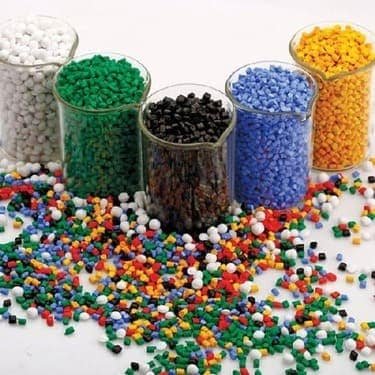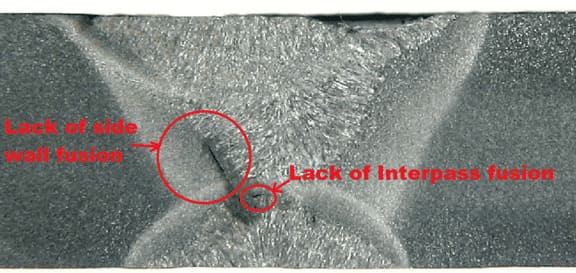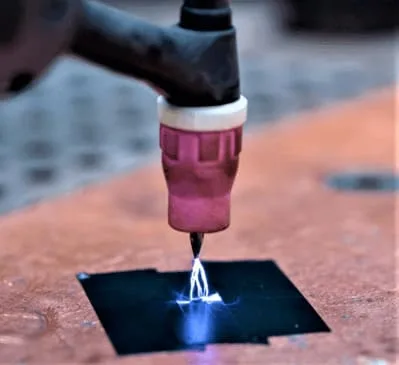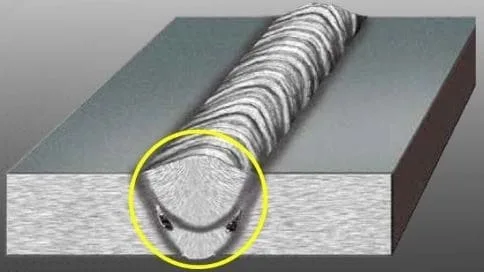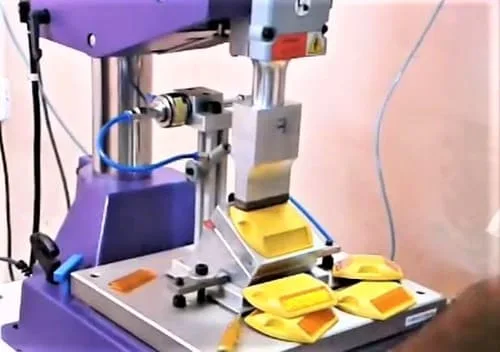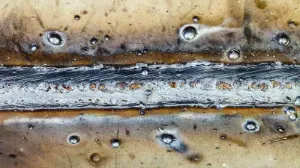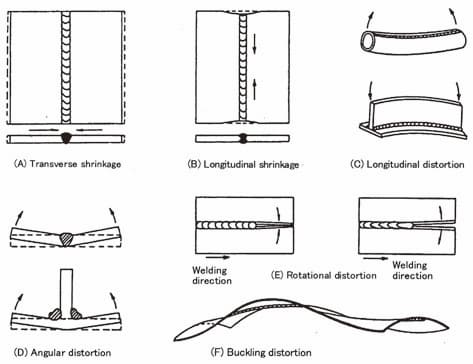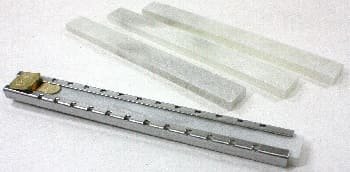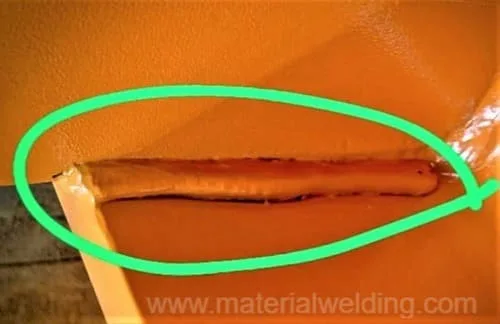What is Weld Line Defect?
A weld line defect is a common problem in injection molded plastic parts. It occurs when two streams of molten plastic meet, cool and then fuse together during the injection molding process.
The result is a visible line running along the length of a part where two separate parts were fused together that can be seen or felt on the finished product.
Weld lines may appear as raised or depressed areas along the surface of an injected part, creating weak spots which can reduce strength and cause cracking and other problems with the part’s performance.
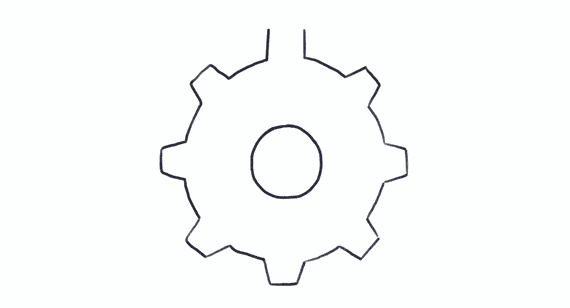
eld lines are caused by a combination of factors such as the design of the mold, the flow pattern of the plastic, and the speed at which the plastic is injected into the mold.
They can occur at the gate location, where the plastic enters the mold, or anywhere along the flow path where the plastic meets and fuses together.
How do Weld Lines Appear?
Weld lines are an often-overlooked aspect of plastic injection molding. However, these structural features can play a vital role in the mechanical properties and aesthetics of a plastic part.
Understanding how weld lines form is essential to evaluating their impact and managing them in the molding process.
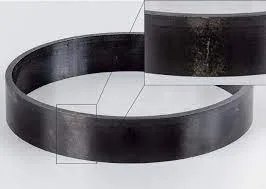
In short, weld lines occur when two separate streams of material flow together during injection molding. This usually happens when two different injection points meet within the same cavity.
Read more: How Is Plastic Made, Step By Step process explained?
As they join, they create a line where there is no molecular bond between the two sets of plastic molecules, resulting in a weaker area that can be seen on the surface of the part.
Weld lines appear as a result of the flow of molten plastic during the injection molding process. When two or more streams of plastic meet and fuse together, a visible line or weakness is formed on the surface of the finished product.
These lines can occur at the gate location, where the plastic enters the mold, or anywhere along the flow path where the plastic meets and fuses together.
What in Injection Moulding Process?
Injection molding works by heating plastic pellets until they become a molten liquid, which is then injected under high pressure into a mold.
The mold is typically made of metal and consists of two halves that come together to form the shape of the final product.
The mold also includes channels, called runners, that transport the molten plastic from the injection point to the various cavities in the mold.
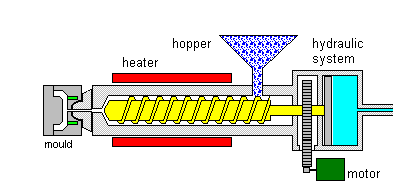
- First, the desired amount of plastic pellets are loaded into a hopper and are then fed into the heating barrel of the injection molding machine.
- The plastic pellets are then heated to a liquid state and are forced through a nozzle into the mold.
- The molten plastic is injected into the mold under high pressure, which helps to ensure that the plastic fills every corner of the mold.
- The mold is then cooled, typically using water or air, until the plastic solidifies.
- Once the plastic has solidified, the mold halves are separated, and the finished product is ejected.
- The final product is checked for defects, and if it passes inspection, it is packaged and shipped to the customer.
What are the Causes of Weld lines?
Weld lines, also known as knit lines, are caused by the convergence of two flowing polymer melt streams during the injection molding process.
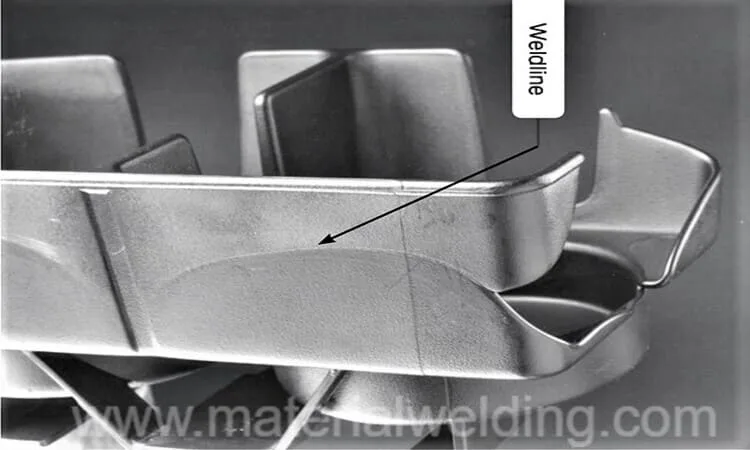
When the streams meet, they can create a weak point in the finished product where the molecules have not been fully mixed. This can lead to reduced strength and increased brittleness in the affected area.
The main causes of Weld Line or Knit lines are:
Convergence of two flowing polymer melt streams during injection molding process:
- This is the most common cause of weld lines, as the two melt streams coming from different runners or gates in the mold meet and do not fully mix, creating a weak point in the finished product.
Weak point created where molecules have not been fully mixed
- As the two melt streams meet, they can create a weak point in the finished product where the molecules have not been fully mixed. This can lead to reduced strength and increased brittleness in the affected area.
Uneven melt flow
- If the melt flow is uneven in the mold, it can lead to a difference in pressure and velocity, which can cause the melt streams to converge and create a weld line.
- Variations in temperature or pressure: If the temperature or pressure in the mold is not consistent, it can cause variations in the melt flow, which can lead to the formation of weld lines.
Improper mold design or tooling
- Incorrect mold design, such as gates that are too small or in the wrong location, or poor quality tooling can lead to the formation of weld lines.
Improper gate location and size
- Improper gate location or size can cause pressure imbalance and flow imbalance, which leads to poor filling and weld lines.
Incorrect processing conditions
- Incorrect processing conditions, such as high injection speed, high injection pressure, or high melt temperature can cause weld lines.
Incorrect material selection
- Using a material that is not well-suited to the process or the part design can lead to weld lines.
Insufficient packing pressure and time
- Insufficient packing pressure and time can lead to poor filling and weld lines.
Uneven cooling of the part
- Uneven cooling of the part can cause variations in the contraction of the plastic, which can lead to the formation of weld lines.
High melt viscosity
- High melt viscosity can cause poor filling and weld lines.
How Do Weld Lines Affect the Part?
Weld lines can have a significant impact on the quality and performance of the finished part. Some of the ways that weld lines can affect the part include:
- Reduced Strength: Weld lines can create a weak point in the finished product where the molecules have not been fully mixed, which can lead to reduced strength in the affected area.
- Increased Brittleness: Weld lines can lead to increased brittleness in the affected area, making the part more prone to cracking or breaking under stress.
- Aesthetics: Weld lines can be visible on the surface of the part and can have a negative impact on the appearance of the finished product.
- Dimensional Accuracy: Weld lines can cause variations in the thickness of the part, which can lead to dimensional inaccuracies and difficulty in achieving tight tolerances.
- Impact on Performance: Weld lines can affect the performance of a product, for example, they can cause leaks in a product designed to contain fluids, or they can cause variations in the coefficient of thermal expansion in a product designed to withstand temperature changes.
- Reduced Service Life: Weld lines can reduce the service life of the part, as they can make the part more prone to failure over time.
Overall, weld lines can affect the structural integrity, quality, and performance of the finished part, which can lead to increased cost, decreased customer satisfaction and return of the product.
How to Prevent Weld Lines
Weld lines are almost unavoidable in practice. Improvements can be achieved, among other things, by higher tool temperatures.
As a result, the outer layer does not cool down as quickly and thus bonds better. An increase in the mass temperature allows a more homogeneous fusion of the flow fronts. Increasing injection speed and holding pressure can also reduce the formation of weld lines.
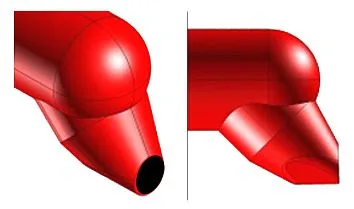
There are several ways to prevent weld lines from forming in injection-molded parts, some of the common methods include:
- Proper gate design and location: Proper gate design and location can help to ensure that the melt flows evenly and smoothly into the mold.
- Use of proper runner and gate size: Using a runner and gate size that is appropriate for the part design and the material being used can help to prevent weld lines.
- Consistent processing conditions: Maintaining consistent processing conditions, such as temperature, pressure, and injection speed can help to prevent variations in the melt flow that can lead to weld lines.
- Proper material selection: Choosing a material that is well-suited to the part design and the process can help to prevent weld lines.
- Proper packing pressure and time: Applying proper packing pressure and time can help to ensure that the part is filled completely, which can help to prevent weld lines.
- Proper cooling: Properly designing the cooling system of the mold to ensure that the part cools evenly can help to prevent weld lines.
- Use of proper surface finish: Using a proper surface finish of the mold cavities can help to reduce the chances of weld lines.
- Use of simulation: Running simulation to optimize the process and identify the potential problem areas can help to prevent weld lines.
- Use of weld line preventative measures: Some materials have specific additives that can be used to prevent or reduce the formation of weld lines.
Troubleshooting Weld Line Defects
What can you do to avoid problematic seams? You probably can’t do without features like bulges.
However, plastics can be selected that are less susceptible to the formation of seams. In particular, you can avoid filled plastics for parts with features such as through holes.
Parts walls can be made thicker to slow down the cooling of the plastic. Nevertheless, the walls should not be too thick, otherwise sink marks can occur.
You can also place features that cause seams at a certain distance from the edges of a part, if the design allows it.
Related Posts:
